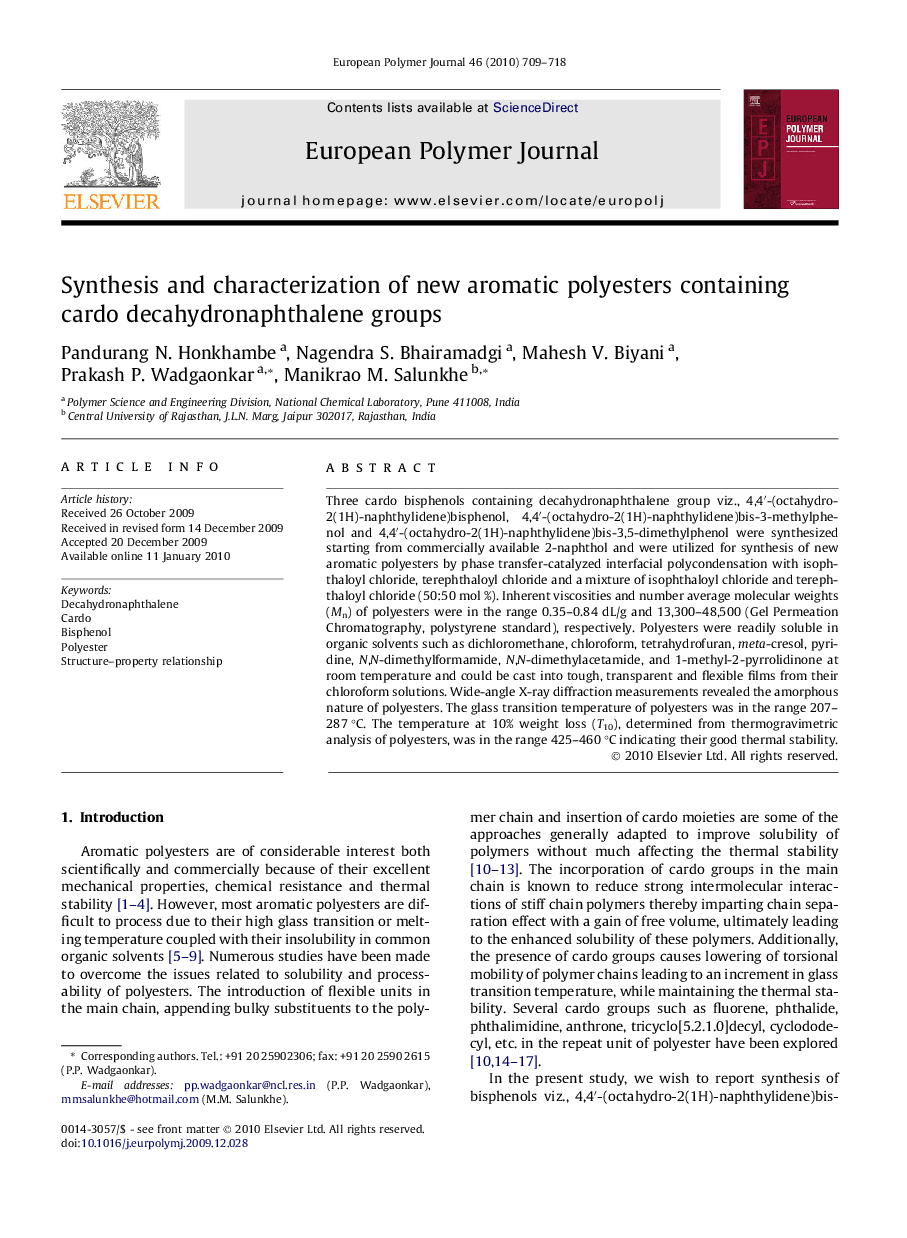| Article ID | Journal | Published Year | Pages | File Type |
|---|---|---|---|---|
| 1402525 | European Polymer Journal | 2010 | 10 Pages |
Three cardo bisphenols containing decahydronaphthalene group viz., 4,4′-(octahydro-2(1H)-naphthylidene)bisphenol, 4,4′-(octahydro-2(1H)-naphthylidene)bis-3-methylphenol and 4,4′-(octahydro-2(1H)-naphthylidene)bis-3,5-dimethylphenol were synthesized starting from commercially available 2-naphthol and were utilized for synthesis of new aromatic polyesters by phase transfer-catalyzed interfacial polycondensation with isophthaloyl chloride, terephthaloyl chloride and a mixture of isophthaloyl chloride and terephthaloyl chloride (50:50 mol %). Inherent viscosities and number average molecular weights (Mn) of polyesters were in the range 0.35–0.84 dL/g and 13,300–48,500 (Gel Permeation Chromatography, polystyrene standard), respectively. Polyesters were readily soluble in organic solvents such as dichloromethane, chloroform, tetrahydrofuran, meta-cresol, pyridine, N,N-dimethylformamide, N,N-dimethylacetamide, and 1-methyl-2-pyrrolidinone at room temperature and could be cast into tough, transparent and flexible films from their chloroform solutions. Wide-angle X-ray diffraction measurements revealed the amorphous nature of polyesters. The glass transition temperature of polyesters was in the range 207–287 °C. The temperature at 10% weight loss (T10), determined from thermogravimetric analysis of polyesters, was in the range 425–460 °C indicating their good thermal stability.
Graphical abstractFigure optionsDownload full-size imageDownload as PowerPoint slide
